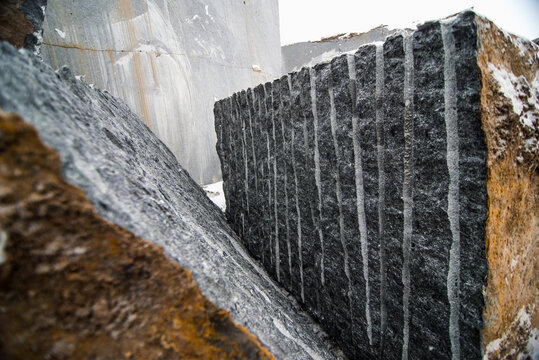Opening All-natural Treasures: Granite Quarries in South Africa Revealed
Opening All-natural Treasures: Granite Quarries in South Africa Revealed
Blog Article
Introducing the Mysteries of Granite Quarrying: Where Strength and Elegance Meet
The globe of granite quarrying is a realm where the raw strength of nature assembles with human artistry to produce frameworks that stand the examination of time with an air of style. From the midsts of quarries to the precise polishing in workshops, the process of transforming granite into architectural marvels is a complicated dancing of custom and innovation. As we peer into the depths of this old craft, we start to reveal the hidden complexities that shape the extremely essence of our developed atmosphere.
The Beginnings of Granite Quarrying
In the record of building background, the origins of granite quarrying are shrouded in a tapestry of ancient craftsmanship and geological marvels. Dating back to old Egypt and Mesopotamia, the removal of granite from quarries noted the beginning of a trip that would ultimately bring about the development of some of the globe's most famous structures.
Granite quarrying's origins can be mapped to the knowledgeable craftsmens that acknowledged the stone's longevity and aesthetic allure. Through a mix of primitive tools and large resolution, these early quarry employees discovered granite blocks that would certainly come to be the foundation of people.
As civilizations progressed, so did the methods of quarrying granite. The Romans, renowned for their design expertise, created advanced methods for drawing out granite to build monoliths, temples, and roadways that stood the examination of time.
The legacy of these old quarrying techniques remains to form modern-day design, with granite staying an icon of stamina and sophistication in building projects around the world. (granite quarries in south africa)
Tools of the Quarrying Trade
The advancement of granite quarrying strategies from old worlds to modern-day times highlights the critical duty played by the tools of the quarrying profession in forming the market's methods. In ancient times, quarrying tools were rudimentary, frequently including knives, hammers, and wedges made from products like bronze or iron. These devices called for substantial workforce and time to remove granite obstructs from quarries.

Additionally, the introduction of pneumatically-driven devices and high-powered machinery has substantially lowered the physical labor called for in quarrying procedures, boosting worker safety and security and performance. As the quarrying sector remains to innovate, the tools of the trade remain at the forefront of driving progress and forming learn the facts here now the future of granite extraction.
Extracting Blocks of Granite
Utilizing accuracy machinery and progressed methods, the extraction of granite obstructs from quarries has become a sophisticated process in the modern-day quarrying market. The initial action includes recognizing the place and size of the granite deposit to establish one of the most reliable extraction method. When a suitable site is picked, the removal procedure starts with the exploration of openings for the positioning of nitroglycerins. Regulated blasting strategies are after that employed to damage apart the granite right into convenient sections.

Polishing and Ending Up Methods
To achieve a remarkable surface on granite blocks, experienced craftsmens use a visit this web-site series of thorough polishing and completing strategies. After the preliminary extraction and forming procedures, the granite obstructs go through a comprehensive sprucing up phase to improve their all-natural beauty and sturdiness. One usual method utilized in brightening granite is diamond abrasion, where commercial rubies are made use of to grind and polish the stone to a smooth finish. This procedure not just develops a lustrous surface area but likewise guarantees harmony in color and appearance throughout the granite block.
In addition to polishing, completing methods are applied to more fine-tune the granite's appearance. These strategies may consist of flaming, refining, or brushing, each offering one-of-a-kind structures and surfaces to match different visual preferences. Flaming, for circumstances, involves revealing the granite surface to heats to produce a harsh, textured surface, ideal for outside applications where slip-resistance is important. Sharpening, on the other hand, gives a matte finish that is smooth to the touch, ideal for interior countertops and floor covering. By carefully choosing and using these brightening and finishing methods, craftsmens can change raw granite obstructs into charming items that display both strength and sophistication.

Ecological Impact and Sustainability
With the expanding focus on ecological consciousness in the market, granite quarrying practices are increasingly scrutinized for their impact on all-natural sources and long-lasting sustainability. In addition, the transportation of granite from quarries to processing facilities creates carbon exhausts, additionally contributing to ecological deterioration.
To minimize these influences and ensure sustainability in granite quarrying, industry stakeholders are embracing numerous steps. Executing advanced modern technologies to lower power consumption and water usage, recovering quarried land for environmental repair, and promoting responsible sourcing practices are some methods being utilized. Qualifications such as the Woodland Stewardship Council (FSC) and the Management in Energy and Environmental Style (LEED) help consumers determine ecologically pleasant granite products.
Verdict
Finally, granite quarrying is a procedure that requires specialized devices and methods to remove blocks of granite and polish them to a high degree of surface. While the environmental effect of quarrying can be significant, initiatives are being made to enhance sustainability methods in the sector. Generally, granite quarrying is a delicate equilibrium between harnessing the toughness and beauty of this all-natural stone while minimizing its influence on the environment.
Report this page